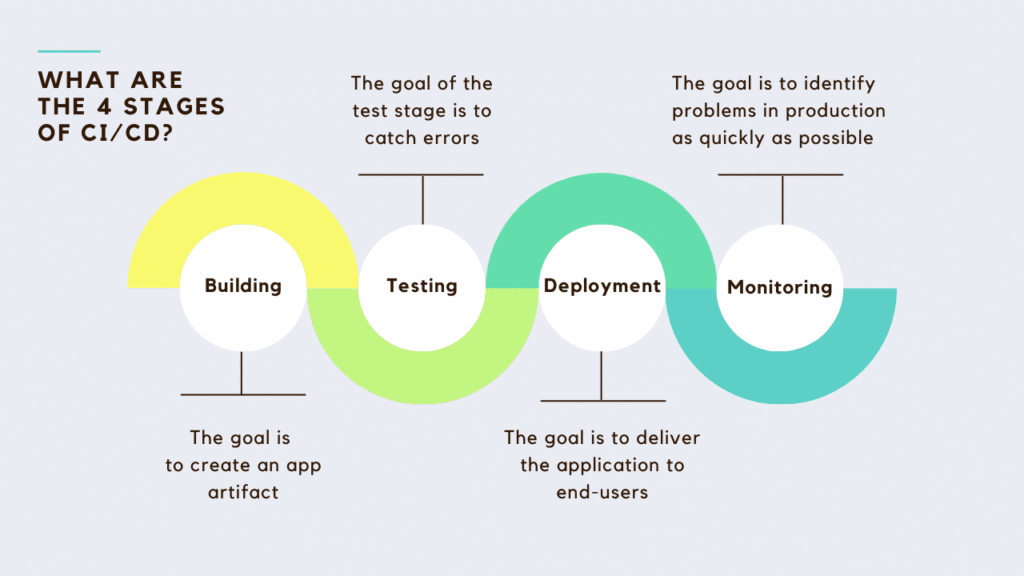For “Minecraft,” “Dead by Daylight,” “Lumberyard,” and lots of other popular game-developing companies, AWS Game Server became the go-to choice. With over 20 regions worldwide and support for popular game engines like Unity and Unreal Engine, AWS Game Server provides game developers with the tools they need to host their games globally with low-latency gameplay experiences.
In this article, we will discuss how you can leverage AWS Game Server to develop and deploy mobile game apps faster and cheaper. Specifically, we will examine the advantages of implementing AWS Game Server’s CI/CD pipeline and provide a case study for illustration. So, let’s dive in!
What is AWS Game server?
At its core, AWS Game Server is a service offered by Amazon Web Services (AWS) that allows game developers to deploy, scale, and operate multiplayer games in the cloud quickly. It provides game developers various tools and features to build and run game servers, including matchmaking, leaderboards, game data analytics, and server fleets management.
Imagine you’re a game developer building a massively multiplayer online game (MMO) that requires a scalable and reliable server infrastructure to support many concurrent players. Traditionally, you would need to purchase or lease dedicated servers, set up and maintain the network infrastructure, and deploy and manage the game servers independently.
However, with AWS Game Server, you can leverage cloud-based infrastructure to build and deploy your game servers quickly and easily. Now, with AWS Game Server, game developers can focus on building their games rather than managing infrastructure.
CI/CD pipeline
What is CI/CD pipeline?
CI/CD (Continuous Integration/Continuous Delivery) pipeline is a part of DevOps. It is a software development practice that enables developers to automate and streamline the process of building, testing, and deploying code changes. A CI/CD pipeline aims to reduce the time and effort required to get code changes from development to production while ensuring that the code changes are reliable, high-quality, and secure.
How does the CI CD process work?
Let’s compare CI/CD pipeline to a food manufacturing process, where the goal is to produce high-quality, consistent products promptly and efficiently. Just as a food manufacturing process involves several stages, such as ingredient selection, preparation, cooking, and packaging, a CI/CD pipeline consists of several steps. Depending on their specific needs and goals, some organizations may have additional stages or variations in the pipeline. Let’s explore 4 of the most common CI/CD stages: building, testing, deployment, and monitoring.

Building
The first stage in CI/CD pipeline is the building stage. During this stage, code changes are integrated into a single repository and compiled into an executable form. The goal is to create an application artifact that can be tested and deployed in later stages of the pipeline. The build stage can involve compiling code, resolving dependencies, and packaging application components into a deployable form.
Testing
The second stage in CI/CD pipeline is the testing stage. During this stage, automated tests are run to verify that the code is functional and meets the expected requirements. These tests can include unit tests, integration tests, and end-to-end tests. The goal of the test stage is to catch errors early in the development process before they can cause problems in production. Automated testing enables development teams to run tests quickly and consistently, providing feedback on code quality and enabling rapid iteration.
Deployment
The third stage in CI/CD pipeline is the deployment stage. During this stage, the code changes are deployed to a production or staging environment where they can be validated further. The deployment stage involves provisioning infrastructure, configuring networking, and deploying application artifacts. The goal is to deliver the application to end-users in a controlled and repeatable manner. Automated deployment tools enable development teams to roll out changes more quickly and with less risk of downtime or errors.
Monitoring
The final stage in CI/CD pipeline is the monitoring stage. During this stage, the production environment is monitored for issues, and feedback is incorporated back into the pipeline to improve the software over time. The monitoring stage involves logging, metrics collection, and error tracking. The goal is to identify problems in production as quickly as possible and to feed that information back into the pipeline for continuous improvement.
Game Development made faster and cheaper: How can the AWS Game Server CI/CD Pipeline help me?
The game development process involves many artifacts, from the game engine to third-party tools, game assets, and configuration files. Managing these artifacts and ensuring they work together seamlessly can be time-consuming and error-prone. That’s where the AWS Game Server CI/CD Pipeline can help you.
By automating the build, testing, and deployment of game updates to the cloud, the pipeline can help game developers streamline their development process and deliver games faster and cheaper.
- First and foremost, the pipeline can help game developers keep up with the latest updates to their game engine and third-party tools. These updates often come with new features and optimizations, which can significantly improve a game’s performance and gameplay experience.
However, manually updating and integrating these changes can be a time-consuming process. With the AWS Game Server CI/CD Pipeline, game developers can automate the update and integration process, ensuring they always have access to the latest features and optimizations.
- Another key point of the pipeline is automated testing. As game developers make changes, they must ensure that the game still works as intended and meets basic quality standards. Manually testing each change can be tedious and time-consuming, especially as the game becomes more complex.
With the AWS Game Server CI/CD Pipeline, game developers can automate the testing process, ensuring that each change passes basic tests before being delivered to testers. This can save time and reduce the risk of wasted effort.
- Finally, the pipeline includes built-in security features, such as image scanning, that can help mitigate the risk of using infected third-party packages. Game developers often rely on third-party tools and packages to simplify the development process, but these packages can come with security risks. The AWS Game Server CI/CD Pipeline can help mitigate these risks by scanning packages for known vulnerabilities and malware.
Advantages of AWS Game Server CI/CD Pipeline for Mobile Game App Development
Let’s explore some advantages of using AWS Game Server for mobile game apps development and hosting and how they can help game developers create better games and provide a more enjoyable experience for players.
Reduced development time
- AWS Game Server enables developers to focus on game development rather than infrastructure management;
- Automated tools and services speed up the development and deployment process;
Improved scalability
- AWS Game Server provides automatic scaling and load-balancing services;
- Dedicated Game Servers on the cloud can quickly scale up or down based on player demand;
Enhanced security
- AWS Game Server provides a secure and reliable game-hosting environment with features such as network isolation, DDoS protection, and encryption;
- AWS Game Server complies with a range of security and privacy regulations, such as GDPR and HIPAA, which can be important for game developers who need to meet regulatory requirements;
Scaling Up: A Case Study in Mobile Game Development with AWS
Let’s take a closer look at an impressive success story in the gaming industry.
In 2022, a Hong Kong-based startup, Firework Games, developed and launched its first game, Spark Era, a Massive Multiplayer Online Role-Playing Game (MMORPG), with remarkable results by leveraging the power of Amazon Web Services (AWS).

Using Amazon Elastic Cloud Compute (Amazon EC2) Auto Scaling and Amazon Elastic Graphics, the company quickly scales its compute capacity for player traffic, hosting up to 20,000 players concurrently with near-zero downtime. With AWS Availability Zones and AWS Regions, Firework Games company delivers a level playing field for players globally, keeping latencies within the 100-160 ms range for global users.
By deploying AWS Deep Learning AMIs, Firework Games accelerated game development by 80%, and AWS Relational Database for MySQL (Amazon RDS for MySQL), Amazon ElastiCache, Amazon Aurora, and AWS Glue allowed for the ingestion and processing of game data for its machine learning models.

“The AWS team and AWS Enterprise Support have been very helpful in supporting our development of Spark Era and ensuring the best player experience. They guided us on which AWS Regions meet our needs and advised us on the Amazon EC2 instances needed for our setup. The AWS team also worked with us on a globally scalable design – from latency reduction through region selection, Amazon CloudFront and AWS Global Accelerator implementation, and Transmission Control Protocol (TCP)-based autoscaling strategy to optimize compute resource usage. In summary, AWS helped us make the most of our resources, which is vital for us as a startup,” stated Moses Ip, CEO of Firework Games.

After migrating its game app development to the AWS cloud, Firework Games achieved significant benefits.
The gamers experienced a 40% improvement in latency globally, while the company saved 30% in manpower costs and US$30,000 from moving from on-premises servers to the AWS Cloud. In addition, the development process of the game app became 20% faster, and new players experienced a 300% increase in download speeds.






